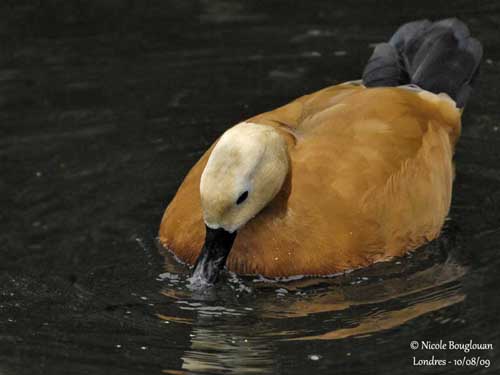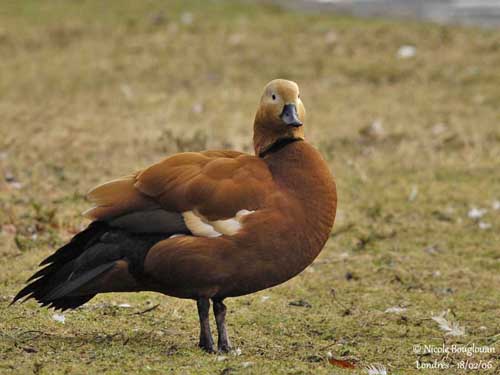
PROTECTION / THREATS / STATUS:
The Ruddy Shelduck has declined in the western parts of the range, where it is threatened by habitat loss and hunting.
The drainage of wet areas and the urban developments are also important threats across the Mediterranean range.
However, the species is not currently threatened and evaluated as Least Concern by Birdlife International.
Fr: Tadorne casarca
All : Rostgans
Esp : Tarro Canelo
Ital: Casarca ferruginea
Nd: Casarca
Sd: Rostand
Text and photographs by Nicole Bouglouan
Sources :
HANDBOOK OF THE BIRDS OF THE WORLD vol 1 by Josep del Hoyo-Andrew Elliot-Jordi Sargatal - Lynx Edicions - ISBN: 8487334105
GUIDE DES CANARDS, DES OIES ET DES CYGNES – de Steve Madge - Delachaux et Niestlé - ISBN: 2603013769
A Field Guide to the Birds of South-East Asia by Craig Robson. New Holland Publishers. ISBN: 9781780090498
ENCYCLOPEDIE DES OISEAUX DE FRANCE ET D’EUROPE – de Peter Hayman et Rob Hume - Flammarion – ISBN : 2082009920
BirdLife International (BirdLife International)
Wikipedia, the free encyclopaedia
Ruddy Shelduck
Tadorna ferruginea
Anseriforme Order – Anatidae Family
BIOMETRICS:
Length: 63-66 cm
Weight: 925-1640 g
DESCRIPTION:
The Ruddy Shelduck is very distinctive with its beautiful rusty orange plumage.
The adult has rusty orange plumage overall, except black rump, undertail-coverts and tail. On the wings, the coverts are whitish, washed yellowish-orange in fresh plumage. Primary and secondary flight feathers are black, with green mirror on secondaries.
On the underwing, the flight feathers are black, contrasting with the white coverts.
The male has yellowish head and neck, with darker nape. During the breeding season, we can see a blackish collar, but it is sometimes concealed and invisible.

The female has similar plumage but she lacks the collar. She has whitish face and paler head and neck.
The bill is black. The eyes are dark brown. Legs and feet are black.
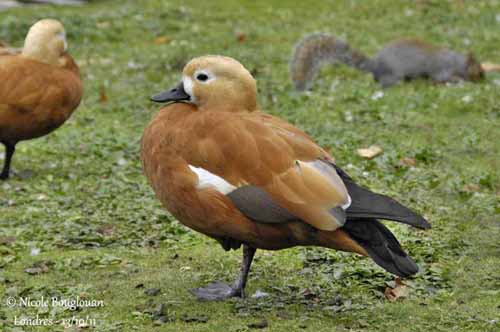
The juvenile is duller than female, with washed greyish-brown plumage especially on head and upperparts.
VOICE: SOUNDS BY XENO-CANTO
The Ruddy Shelduck gives trumpeting and honking “aakh” calls. This bird is noisy when in flocks during winter. Before to take flight, it utters repeated trumpeted “pok-pok-pok”
The female gives lower calls than the male.
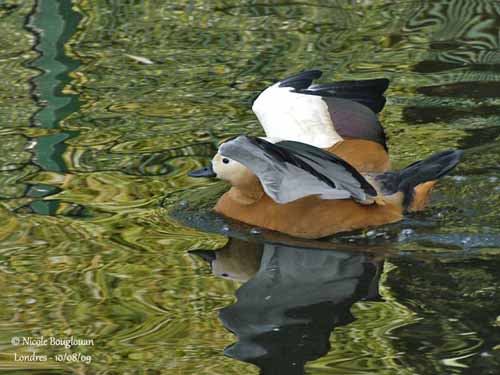
HABITAT:
The Ruddy Shelduck occurs often in open country, on various brackish water, but also salty or freshwater lakes and rivers. It usually avoids wooded and densely vegetated areas.
It may be found close to streams in mountains, up to 900 metres, but it reaches lower elevation during winter.
RANGE:
The Ruddy Shelduck breeds in SE Europe, E to Lake Baikal and Mongolia, and W China. There are two separate populations in NW Africa and highlands of Ethiopia.
The species was formerly widespread in the western part of the range.
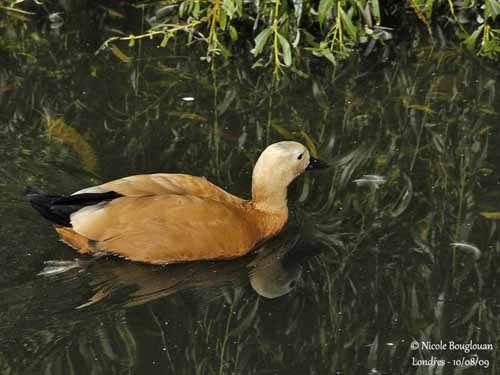
BEHAVIOUR:
The Ruddy Shelduck, as numerous Anatidae species, feeds on plant matter, but also takes aquatic invertebrates, small fish and amphibians.
It feeds on the ground by grazing and plucking food items, but it also forages by dabbling and swimming, and upending in water.
They often gather in flocks close slow-moving rivers and lowland lakes during winter.
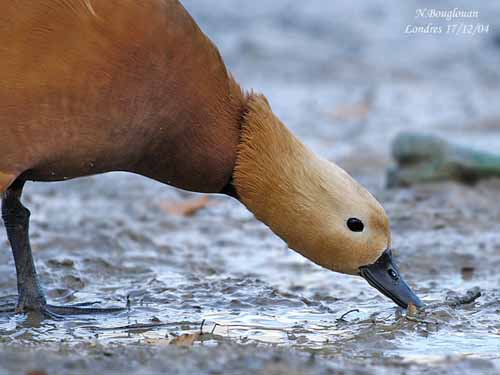
During the breeding season, the Ruddy Shelduck becomes aggressive. They occur in well-dispersed pairs. They defend the nesting site.
The male performs some displays, engaging in head-bowing or head-jerking. They often nest far from water.
Most of them are migratory and move after the moulting period. The Asian populations move southwards to winter in India and SE Asia.
But some populations are sedentary, only moving according to the water levels.
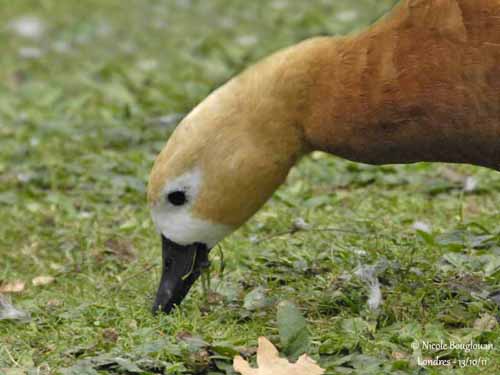
FLIGHT:
The Ruddy Shelduck has strong flight with powerful wing beats.
REPRODUCTION:
The breeding season usually starts in March-April.
The Ruddy Shelduck breeds in single pairs or in loose colonies. The nest is in cavity, burrow, hole in tree, rock crevice, or created in sand or clay bank. It is lined with feathers and down.
The female lays 6-10 eggs and incubates during 28-29 days, while the male defends the nest-site. The chicks are tended by both adults. They have dark brown upperparts with spotted back and white underparts. They fledge about 55 days after hatching, and reach their sexual maturity at two years.
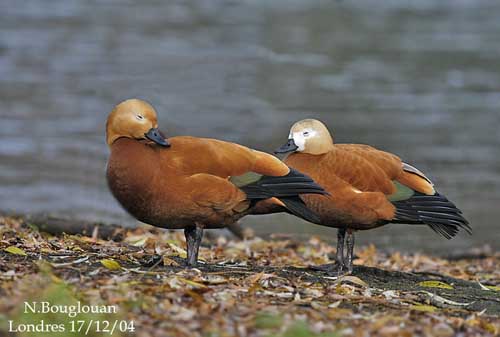
DIET:
The Ruddy Shelduck feeds mainly on plant matter such as grasses, leaves, seeds and stems of aquatic plants, grain and vegetable shoots. They take invertebrates such as worms, insects, crustaceans and molluscs, and also small fish and amphibians. They may frequent rubbish dumps.
